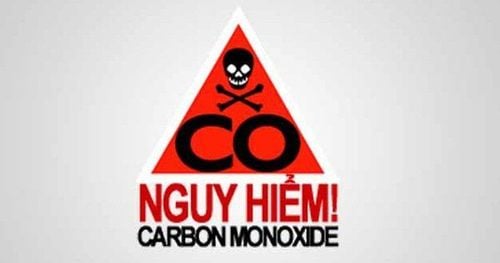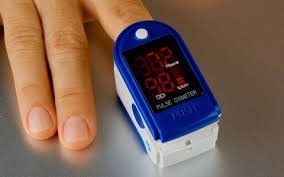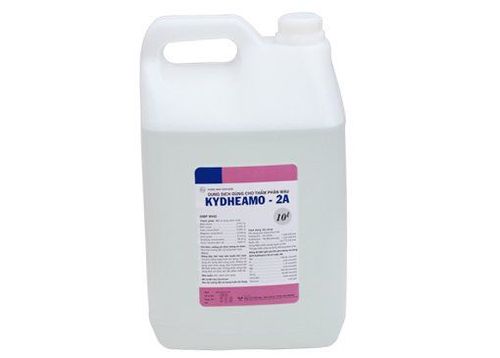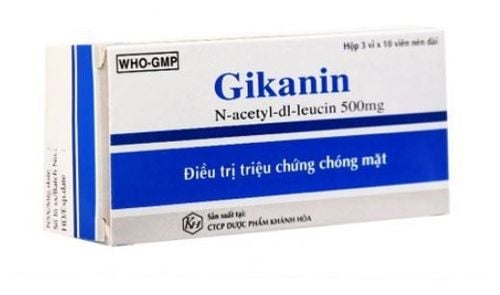This is an automatically translated article.
Article by Master, Doctor Nguyen Ngoc Quang - Department of Intensive Care - Vinmec Times City International Hospital
The clinical symptoms of CO poisoning vary widely and are largely nonspecific. CO affects the transport of oxygen because the CO gas molecule attaches too tightly to the hemoglobin molecule, taking the position of hemoglobin attached to oxygen, leading to oxygen not being transported by hemoglobin to the cell tissue.
1. What is CO poisoning?
Carbon monoxide (CO) poisoning is a common form of poisoning and is a high cause of death for people infected. Diagnosis is difficult due to nonspecific clinical presentation. CO affects the transport of oxygen because the CO gas molecule attaches too tightly to the hemoglobin molecule, taking the position of hemoglobin attached to oxygen, leading to oxygen not being transported by hemoglobin to the cell tissue.
1.1 Epidemiology
CO poisoning is most common during winter in cold climates, but it can occur in all seasons and environments. Inhalation of smoke containing CO is mostly accidental and unpredictable, making it difficult to exploit the cause in the first place if the patient has impaired consciousness.
Ceramic CO sources: Outdated heating systems, improper fuel-burning equipment (eg, kerosene heaters, coal stoves, camping stoves, gasoline generators), operating motor vehicles in a poorly ventilated area.
1.2 Mechanism of poisoning
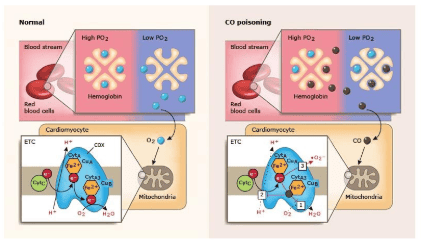
CO diffuses rapidly through the alveoli, through the pulmonary capillary membrane into the blood and binds to the iron moiety of heme with an affinity about 240 times greater than that of oxygen, this bond is much more stable than oxygen, leading to The heme nucleus can no longer attach to oxygen.
2. Clinical manifestations of CO . poisoning
The clinical symptoms of CO poisoning vary widely and are largely nonspecific. Patients with mild to moderate CO toxicity typically present with nonspecific symptoms of: Headache (most common), malaise, nausea, and dizziness, and may be misdiagnosed with an acute viral syndrome. In the group of patients without trauma or burns, clinical signs suggestive of CO poisoning are usually changes in mental status, ranging from mild confusion to convulsions and coma. Careful neurological examination is important to detect CO poisoning.
Complications of myocardial ischemia may occur. Once CO toxicity has been diagnosed, the patient should have an electrocardiogram (ECG); Test for cardiac biomarkers for an accurate diagnosis.
Risk factors that increase the likelihood of myocardial ischemia include: Age over 65 years, or a history of heart disease or cardiac risk factors. Diagnosis of CO poisoning is based on history and physical examination combined with quantification of elevated carboxyhemoglobin levels in the blood. Other markers such as (SpO2) cannot distinguish between oxyhemoglobin and COHb. Blood PO2 measurements tend to be normal because PO2 reflects only dissolved O2 levels in the blood and this process is not affected by CO.
3. Treatment of CO . poisoning
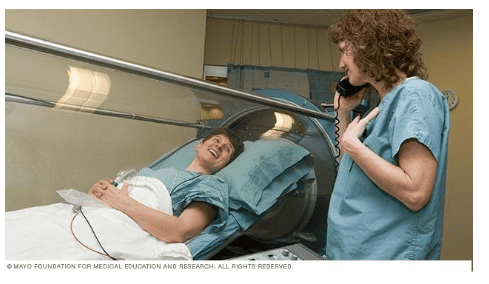
Continuous assessment and timely interventions to ensure the airway, breathing and circulation of patients with CO poisoning is of paramount importance. It is recommended that all patients with coma or severe impairment of consciousness be intubated and mechanically ventilated (recommendation 1B).
The most important interventions for treating patients with CO poisoning are prompt removal of the CO source and 100% oxygen delivery with a mask or endotracheal tube. Patients should initiate initial treatment with 100 percent normal oxygen for all suspected CO poisoning victims, regardless of normal arterial SPO and PO2 (Grade 1B recommendation).
In severely intoxicated patients, treat with hyperbaric oxygen (HBO) to reduce the incidence and severity of chronic neurological complications following CO poisoning. Experts have published about the role of hyperbaric oxygen. Doctors recommend HBO in the following situations (2B recommendation):
CO level > 25% CO level > 20% in pregnant patient Loss of consciousness Severe metabolic acidosis (pH < 7.1) Lack of evidence organ ischemia (eg, ECG changes, chest pain, altered mental status) Many patients with mild symptoms of unintentional poisoning can be managed in the emergency department and discharged safe. Patients with severe symptoms, ECG changes or laboratory evidence, or those with other serious comorbidities should be hospitalized. Identifying the mechanism of exposure is important in cases of unintentional poisoning in order to limit the risk to others.
Vinmec International General Hospital with a system of modern facilities, medical equipment and a team of experts and doctors with many years of experience in medical examination and treatment, patients can rest assured to visit. examination and treatment at the Hospital.
Please dial HOTLINE for more information or register for an appointment HERE. Download MyVinmec app to make appointments faster and to manage your bookings easily.





